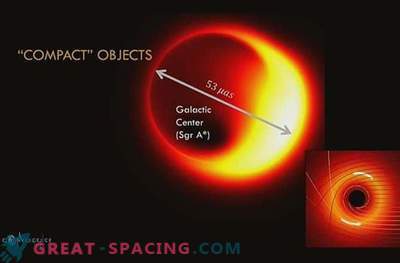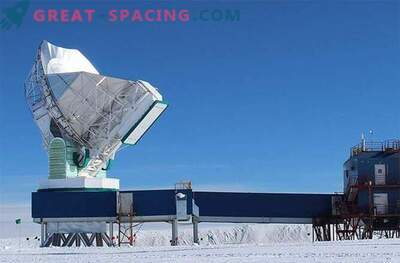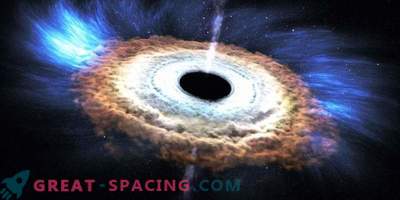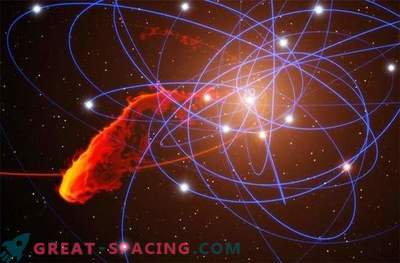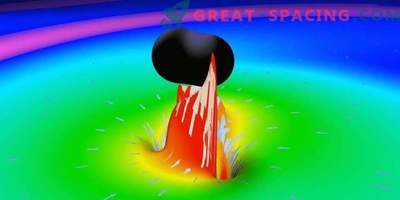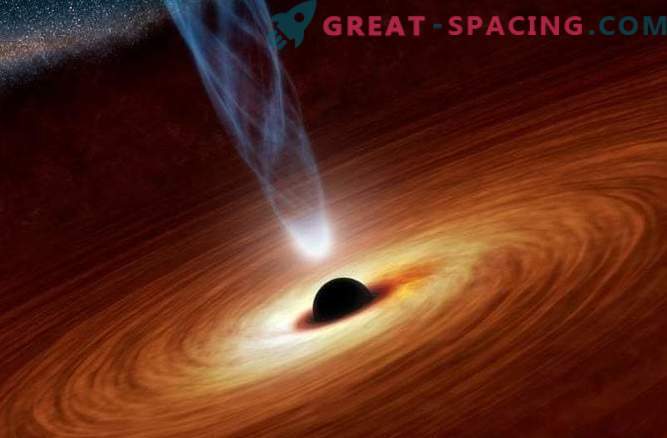
Using the power of interferometry, two astronomical projects for the first time will be able to directly observe a black hole in the center of the Milky Way.
This is a real monster living in the center of the galaxy.
We know that there is a supermassive black hole due to the movement of stars and gas clouds revolving around an invisible point. This point has an overwhelming tidal effect on all objects that fall into its trap, and this force can be used to calculate the mass of a black hole.
This, of course, is not the biggest black hole in the universe, but not the smallest. It is 4 million times more massive than our Sun.
This black hole is called Sagittarius A * and is located more than 20,000 light-years from Earth, which makes direct observation impossible. Despite its enormous mass, a black hole is insignificant in size when viewed from Earth. Here you will need a telescope with unprecedented angular resolution.

Photograph of the Very Large Telescopes of the Paranal Observatory
Although we already know a lot about Sagittarius A * thanks to indirect observations, there is currently a real international race using the most powerful observatories in the world and the most complex astronomical methods to provide an image of the black hole of the Milky Way. This will allow not only to prove that it exists, but also show the area where space-time is deformed - a place with the strongest gravity in the Universe. Huge global efforts are underway to link the network of global radio telescopes to create a virtual telescope that will cover the width of our planet. Using the incredible power of interferometry, astronomers can combine light from many distant radio antennas and collect it at a single point to mimic one large radio antenna spanning the entire globe.
This effort is known as Event Horizon Telescope (EHT), and it is hoped that the project will be able to achieve angular resolution and spatial increase in order to conduct the first radio observations of the bright ring near the event horizon Sagittarius A * in the near future - the point surrounding the black hole from where nothing, not even the light can leave it.

One of the four very large telescope domes launches its new four-laser adaptive optics system. GRAVITY will also use adaptive optics to enhance Sagittarius A * observations by compensating for the effects of atmospheric turbulence.
Nevertheless, there is another project that has the same goal, though it will not be observed in the radio band, but will look into the core of the galaxy and look for optical and infrared light coming from Sagittarius A *. But he needs one observatory to make this goal a reality.
Currently, the GRAVITY tool passes the final checks before starting the project using the Very Large Telescopes at the Paranal Observatory, located high in the Atacama Desert, Chile. He will also use the power of interferometry to make an image of our supermassive black hole. But instead of using the global network of radio telescopes, as in the EHT project, GRAVITY will combine the light of four 8-meter interferometry VLT telescopes (commonly known as VLTI) to create a “virtual” telescope, the size of which is equal to the distance between the individual telescopes . "By doing this, you can achieve the same resolution and accuracy that you get from a telescope a hundred meters in diameter," said astronomer Oliver Pfuhl from the Max Planck Institute for Extraterrestrial Physics, Germany. “We know that for the past ten years, the black hole was not really black. We notice lightening and darkening,” he added.
This is due to the fact that matter falls into the event horizon, creating a powerful flash of energy. The nature of these outbreaks is poorly understood, but the project should be able to track this event. This absorption of matter will act as signal marks, helping us to see the structure of space-time directly around the black hole for the first time.

ALMA antennas located on the Chahnantor plateau during the event #MeetESO on May 11, 2016. The extreme location of the observatory can lead to unpredictable weather, for example, as in this case, when a blizzard fell on the plateau.
"Our goal is to measure these movements. If we can study these movements that occur so close to a black hole, we will have unique data. Thus, we can directly test the general theory for some of the most extreme conditions, which we can find in the universe, "added Pfuhl.
ALMA itself is an interferometer that consists of 66 radio antennas located on the Chahnantor plateau at an altitude of about 5,000 meters (16,400 feet). Astronomer Linda Watson uses ALMA data to study cold dust in interstellar space, but combining it with EHT data, his radio gathering power will help us understand the dynamics of the environment surrounding Sagittarius A *. "ALMA is an interferometer with 66 antennas, but with respect to the EHT it represents only one telescope and, combining it with other telescopes around the world, we will create one global interferometer," she added.
Many black holes, as scientists believe, have an accretion disk of swirling gas and dust. ALMA, in combination with EHT data, will be able to evaluate the structure of this disk, the speed and direction of movement. Not having direct observations, many of these characteristics were predicted using computer modeling or derived from indirect observations. We are entering an era when we can get answers to some of the biggest secrets.
